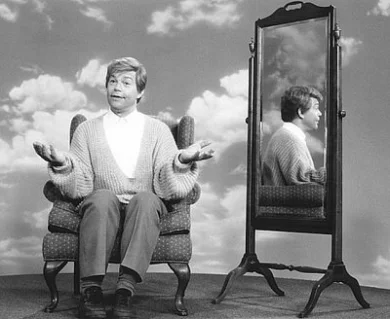Build A Better Twitter Audience
Depending on who you ask, Twitter is either a great tool for digital marketing, the worst thing to happen to mankind or some strange combination of both…either way, a whole bunch of people, companies, organizations and others have an active Twitter account. And by ‘whole bunch’ I mean a WHOLE BUNCH….
Like it or love it, it’s here to stay and it is in fact, pretty damned effective. There are dozens, if not hundreds of strategies out therefor how to make an impact on Twitter…
…this is mine.
In 2010, I was joined the marketing department at a national media company with a focus on building and expanding (primarily digital) communities around both the brand and the produced/distributed programming. One of the aspects I enjoyed most about the job (in addition to having direct contact with some great programs) was the amount of liberty I was given to develop strategies on my own to present and occasionally implement. My most lasting and arguably,most successful of these was Following Followers.
I’ll start at the beginning.
In my first few months, I’d been having trouble with Twitter strategy. Facebook was doing well and going as planned. Coordination between the digital-social presence of the programs and our own was cohesive and consistent. Twitter however was lacking. I was waiting in line to purchase tickets to an Atmosphere concert for my wife (she’s a huge fan). While waiting, a conversation about great live shows broke out among the fellow members of the queue. It was really engaging and lively and we even joked that it would be awesome if some of the acts we’d been so passionately discussing, would lend their two cents in on the conversation. That’s when it hit me. Apply the same energy to Twitter that I had just spent in the conversation- and in the same vein. The same way I built quality engaged interaction with Atmosphere fans, I could build quality, engaged Twitter followers rapidly by following the followers of larger accounts who demonstrated shared interests- rather than of abiding by the best practices (at the time) of following, retweeting and direct messaging large accounts in the hopes of gaining attention, mentions, etc.
Using my own Twitter account, I gave myself 30 days to test my new concept, (which I misguidedly thought would be cool to call “Barnacles & Battleships”), the only difference in activity being I would follow at least 12 people a day who both followed a “battleship” (Twitter account with at least 100,000 followes as well as a shared an interest- which I judged based on their Tweets, bio, etc. I would make no changes to my tweet, retweet or mention/message activity.
I started on March 2nd at 10:34am with 134 followers. By 4:41 pm, I had 158 followers. No extra tweets, no extra retweets, just followed 12 people who followed a big account I followed (I believe it was @GuyKawasaki) and picked up 24 new followers. To put that in perspective, from the time I joined Twitter in 2008, to the morning of March 2nd 2011, I acquired 135 followers. Granted, I wasn’t a heavy user, I mostly just tweeted about my day and shared links to interesting articles, but my followers were solid and engaged. I was, and still am, a huge proponent of quality over quantity when it comes to building a social audience. I increased my followers by a 7th, in less than 24 hours! But would it be consistent? Was this a fluke? There was only one way to find out…
Date Followers
3/2 158
3/3 215
3/4 335
3/7 500
3/8 526
3/9 568
3/10 603
3/16 696
3/17 710
3/18 729
3/21 732
3/22 737
3/24 736
3/25 723
3/28 721
3/29 723
3/31 728
4/4 741
When I finished the test, I had acquired 741 followers. That’s not a typo. I picked up an additional 607 followers in four weeks. Wanting to figure out why the results were as they were, I referenced dozens of virality studies, white papers and reports (such as The Plaxo Virality Index and many, many others) but the answer was shockingly simple:
The above picture is a graph demonstrating how a series of self-sustaining relationships were built. N1 is a popular account. N3 is me. N2 is a follower of N1, and N4 is a follower of N2. T is an interaction interval (ie, a follow). V means “Follow” and F means “Friend” (defined by activity such as a retweet, mention or message). In other words:
T1- N3 follows N2.
T2- N2 follows N3. N4 notices and follows N3
T3- N3 has successfully acquired Friend status with N2, follows N4 back
T4- N3 has successfully acquired Friend status with N4.
The reason behind this is that the followers I was following tended to have smaller groups of followers of their own, making activity between the myself and the follower more noticeable. Thus the followers of the account I follow, tended to follow me as well and in most cases, those new accounts also had a small group of followers creating a cycle. I took the results to my boss, got the go ahead and applied Following Followers to the company’s main account. Within a similar amount of time, our growth mirrored that of my initial test.
So at this point you’re probably wondering why I didn’t post anything earlier (like say, after the success of the main account). The reason I waited so long to post this blog is that I wanted to have enough cases (to date, about 40 from friends, colleagues and clients) in which the Following Followers strategy had been implemented. I’ll be the first to say that again, it was not a wholly scientific experiment, but it’s worked for me and many of my colleagues so I can comfortably recommend giving it a go.
Like many Twitter strategies, it’s not guaranteed. It may take longer or shorter, or the results may not be as dramatic, but it’s been extremely effective for me and many others who I’ve shared it with. The last time I applied Following Followers was this month and the results have been varied, (on August 6th we had 1603 followers, on August 10th we had 1746, today we have 1782) but they’re still quite positive.
The best part of this strategy is that because we’re only following accounts that share similar interests, the followers acquired are quality followers who are engaged and interested in our content. Like many things in life, quality is more valuable than quantity….
Just what the hell is SEO anyway?
Marketing, like many industries, uses a ton of shorthand, jargon and acronyms to…actually, I don’t know why we use it, it’s not like it takes noticeably longer to say SEO as opposed to Search Engine Optimization, but we do it anyway. For writing, sure, conserve characters and all that, otherwise it’s pretty much just a way to show everyone you’re in the club.

Granted, some clubs are more desirable than others
Anyway, SEO is one of those acronyms that throws a lot of people off, even those who are already in the club. Put simply, SEO is all about getting traffic to your website. But traffic isn’t as important as ‘engagement’ you might be thinking and you’re somewhat correct, however when it comes to getting people to engage with your site, step one is getting them to your site.
There are two kinds of traffic, Natural and Paid. Natural traffic comes from search results whereas Paid traffic comes from well, paid sources (think advertisements, Google AdWords, etc). Neither is really better or stronger than the other. Both are critically important components of your marketing strategy.
The five points of a stellar SEO (see what I did there? Stellar means “star,” stars have five points) are:
- Quality Content
- Keywords
- Optimize
- Links
- Report
——————————————————————————————————————————————————
QUALITY CONTENT

- Quality is not in the eye of the beholder
Like everything else in marketing (both online and off) Quality content is crucial. Doesn’t matter how amazing your site looks or even how high up in search rankings your site appears. Consistency and habitual behavior are the keys to long term traffic generation. If your site is lacking in content, word will spread quickly and traffic will suffer.
——————————————————————————————————————————————————
KEYWORDS

some people don't really 'get' keywords
Being aware of the language, terminology and keywords used by your target audience is essential. Keywords are what people use for search for sites and what search engine sites use (along with their cryptic search engine algorithmic magic) to provide the sites people are searching for. It all comes down to the number of searches performed and how many websites are using the same terms. Keywords that are too popular have too much competition while keywords that are too unique may not yield much traffic at all. Striking a balance is a challenging and ongoing procedure, however above all you should focus on the terms that are most relevant to your business and target audience.
——————————————————————————————————————————————————
OPTIMIZE

No, I said Opti-MIZE, not...nevermind...
This is the hardest part of SEO and the reason why businesses hire SEO professionals. Front end (what the visitors see) and back end (the behind-the-scenes mechanics of the site) are both equally important in driving traffic. Optimizing your site requires a technical understanding of search engine functionality, site analytics to create comprehensive visitor behavioral profiles, and a strong grasp on digital marketing communications as revisions and improvements to your site have to occur in the three C’s- the Content in the site, the Copy written on the site and the Coding of the site. If you don’t have the resources to hire an SEO professional, you can work with your web designer and developers to optimize your site.
——————————————————————————————————————————————————
LINKS

If you know why I used this image, congrats! You're a nerd too!
Links are a deceptively easy way to increase SEO. Bing, Google and the other search engines measure the relevance and popularity of your website for the keywords you have selected based on the number of outside links leading back to your site. There are many unsavory and somewhat unethical ways to create more links like creating dummy sites and/or keyword farms, but most search engines (especially Google and Bing) keep an eye out for this type of activity and will pull your site from rankings. Generating links is pure marketing, at the very least, you should promote your site via your social channels, and execute targeted strategies to create virality (ie, other people sharing and retweeting your links). Banner ads are effective as well. Work with your marketing team to devise a solid plan as to getting links.
——————————————————————————————————————————————————
REPORTS

Red staplers just staple better, right Milton?
The single most important aspect of SEO is that it’s trackable and measurable. Ongoing assessment and interpretation of your analytics should be the core of your online strategy. If you have the resources and time, daily monitoring of analytics is ideal, however, you should be looking over and revising your strategy based on the analytics on at least a monthly basis. Activity for activity’s sake is a waste of time and resources. Try to avoid doing anything on your site that isn’t data-driven, meaning unless you’ve got numbers to back it up.

































